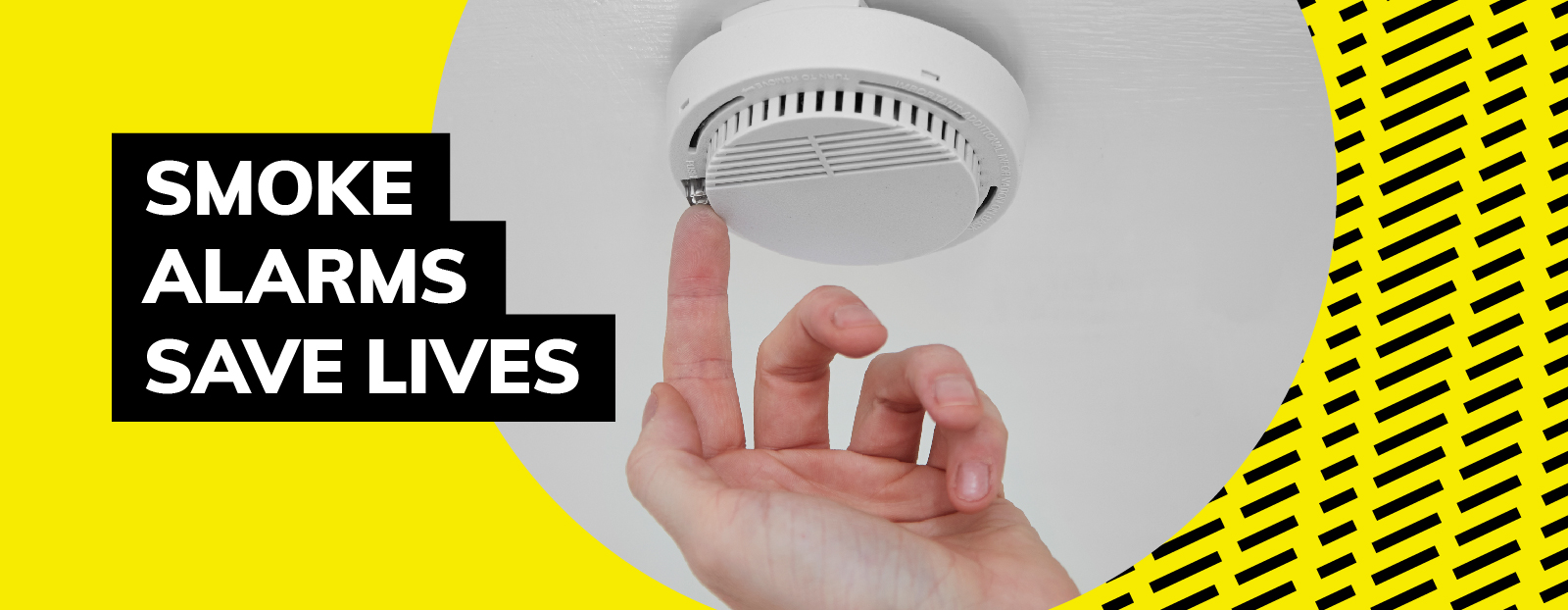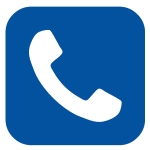Carbon Monoxide Alarm Regulations |
|
Carbon monoxide alarms are required outside all sleeping areas of your home if your home has either a fireplace, a fuel burning appliance, or an attached garage. In condo and apartment buildings with a service room, CO alarms must be installed in the service room and adjacent to each sleeping area of all homes above, below and beside the service room. In condo or apartment buildings that have a garage, CO alarms must be installed adjacent to each sleeping area of all homes above, below and beside the garage. Get to Know CO - a three-part youtube video series:Protecting Your Family with CO Alarms What is CO?
Prevent CO In Your Home
Know The Symptoms Of CO
Know The Sound Of Your CO Alarm
|
Fire Escape Planning |
Fire Escape Planning At WorkAt your workplace do you know:
When the fire alarm sounds call 911 once safely outside. Develop and Practice a Home Fire Escape PlanStatistics reveal that most fire deaths occur in the home between 2am and 4am while occupants are asleep. It is critical to develop a fire escape plan because you need to react quickly when your smoke alarm sounds. Your plan must be practiced so your entire family knows what to do in the event of a fire. Install smoke alarms on every level of your home and outside all sleeping areas. Test your smoke alarms monthly. Replace batteries annually and replace your smoke alarms every 10 years. Draw a floor plan of your home showing all possible exits from each room. When possible, plan two exits from each room. Ensure everyone understands that if they hear the smoke alarm, or someone shouting "FIRE", they should immediately evacuate the home. If anyone in your home is unable to evacuate without assistance, assign someone to assist them. Designate a meeting place a safe distance from your home. Once safely outside call 911 from a neighbour's house or from a cell phone. Never re-enter a burning building. If you live in an apartment building, develop your escape plan taking into account fire escape procedures provided by building management. |
Fire Safety Plans |
A Fire Safety Plan is required in buildings containing a:
The requirements for a Fire Safety Plan also apply to buildings or premises:
**Please ensure your submission is contained in a single pdf file and send to tbfireinspect@thunderbay.ca
Fire Safety Plan Single Stage Fire Alarm System |
Fireworks Safety |
|
To minimize the risk of fire and burn injury, we do not recommend family fireworks or informal neighbourhood displays. We recommend attending public firework displays hosted by the municipality and other responsible organizations. If you choose to set off your own fireworks, ensure the person setting them off owns the property they are on or has permission from the property owner to do so. Our Fire Rescue team recommends following these safety tips:
|
Home Fire Safety Checklist |
Use this Fire Safety Checklist to keep you and your family safe.
|
Smoke Alarms |
|
Smoke alarms are required on every level of your home and outside all sleeping areas. We strongly recommend installing smoke alarms inside sleeping areas. Only a working smoke alarm can provide you with the early warning needed to safely escape a fire.
Remember that only working smoke alarms can save your life. |
Station Tours, Pumper Visits and Educational Visits |
Station ToursTours of local fire stations are available upon request. Station tours last approximately 45 minutes and include viewing the fire apparatus and firefighting equipment, as well as talking to the firefighters about their job. Fire Department Policy restricts the number of people attending to 30 per tour. All school-age children are welcome to participate in group tours. For every four children attending, one supervisor is required. If you are unable to bring your group to a Fire Station, you may request a Pumper attend your event or organization. Pumper VisitAll Pumper Visits are approximately 1 hour in duration unless otherwise specified for promotional events. The Pumper will need an access area where they can make a quick and safe exit for any emergency calls that occur. All requests must be submitted in writing on the appropriate form above to the Fire Prevention Support Clerk. Confirmation of your request will be followed up within five working days. Please do not book prior to one month in advance and no less than two weeks prior to the requested date. Note: When we schedule a request, the firefighters may have to respond to an emergency, thus we do not guarantee availability. Educational VisitEducational visits are available by request for grades 1 and higher. The educational visit will be attended by on duty firefighters. Firefighters will discuss home fire safety and the importance of smoke and carbon monoxide alarms. Visits will last approx. 30mins. Educational Visit Request Form All requests must be submitted in writing on the appropriate form above to the Fire Prevention Support Clerk. Confirmation of your request will be followed up within five working days. Please do not book prior to one month in advance and no less than two weeks prior to the requested date. Note: When we schedule a request, the firefighters may have to respond to an emergency, thus we do not guarantee availability.
Mail, email, fax or drop off your Request Form to the following: City of Thunder Bay Tel: (807) 625-2764 Email the Fire Prevention Support Clerk
|
Using A Fire Extinguisher |
|
Only try to extinguish small fires. If the fire is too large, get out and close all doors behind you. How to use a fire extinguisher:
Not every extinguisher works on all kinds of fires, but some are effective on two or even three kinds of fires. Ensure your extinguisher will work on combustibles in the area by checking the classification of your extinguisher: Class A - suitable for ordinary combustibles such as wood, paper, cloth and rubber. Class B - effective on flammable liquids such as fuel oil, gasoline, cooking grease and solvents. Class C - good for energized electrical equipment such as wiring, fuse boxes and electrical motors. Class D - designed for combustible metals such as magnesium, sodium and zirconium. Class K - designed to supplement pre-engineered kitchen suppression systems involving combustible cooking products.
Never place yourself or others in jeopardy by attempting to extinguish a fire. If you cannot extinguish a small fire with a portable fire extinguisher, or if the smoke becomes hazardous, leave the area. Close the door to confine and contain the fire. Activate the fire alarm, wait outside for the firefighters to arrive and call 911. |
Barbecue Grill Safety |
|
Many people enjoy barbecuing in the summer months, but when grills are not used safely, things can go horribly wrong. Every year, our department responds to hundreds of fires involving grills and barbecues. These fires cause injuries and property damage. For safe grilling, always follow your owner's manual and practice these safety tips: Safety First
Gas Grill SafetySafe Cooking
Handling Propane
Care and MaintenanceFollow the instructions in your owner’s manual for the care and maintenance of your gas grill.
Charcoal Grill Safety
|
Thunder Bay Fire Rescue also provides safety training and resources. Please see the list below to discover some of our educational materials.
Complaints and requests |
|
One of the major duties of the fire prevention division is to help owners, tenants, or workers deal with fire related problems in the buildings they own, occupy or work in. Inquiries or complaints received are anonymous and will be investigated where warranted. The Ontario Fire Code provides a minimum life safety standard for every building in the city. Upgrading of properties is done on a continual basis to ensure exiting; containment, annunciation (alarms), and suppression equipment are present where required by code. |
Fire extinguisher training |
|
Our Fire Rescue team provides fire extinguisher training and conducts practical, hands-on, fire extinguisher training sessions for groups of up to 20 people at one time. The sessions are offered between May 1 and October 31 and are conducted by Fire Prevention Officers. Attendees of this course receive classroom instruction on the classification of fire, types of fire extinguishers, proper extinguisher selection, safe handling practices, and the four step P-A-S-S system of fire extinguisher use. Once the classroom portion of the training is complete, the group will move outside for hands on extinguisher training using our propane fueled fire simulator. Organizers of this training are responsible for providing an acceptable location for the live fire extinguisher training. This location should be a safe distance from any building or vehicle. Organizers are also responsible for providing fire extinguishers for all participants, ideally one for each participant but a minimum of one for every two participants. An indoor area for the classroom instruction is also required. Due to a cost of operation associated with this training, we will invoice a cost recovery charge for this service. The cost is $15 per trainee with a minimum charge of $135 and a maximum charge of $250. To request fire extinguisher training, you can contact us at 807-625-2764. Every effort will be made to accommodate specific date and time requests but training sessions are limited to staff availability. Fire extinguisher training payment |
Liquor License Approvals |
|
For all liquor licenses in the city it is important that the establishments are in compliance with the fire code. Our Fire Prevention Division is commonly requested to review applications. This will also involve a Fire Code inspection. |
Public Education Program |
|
The Fire Prevention Division is often asked to speak on various fire safety topics from small groups to very large audiences. We try to accommodate every speaking engagement request and we are often available to speak after our regular working hours.
On October 10, 2017, Thunder Bay Fire Rescue kicked-off Fire Prevention Week at St. Jude Elementary School. Grade 4 students created a video that was played for a gymnasium full of classmates, teachers, Thunder Bay Fire Rescue personnel and Mayor Keith Hobbs on the importance of working smoke alarms and home fire safety. Watch the video from St. Judes Grade 4 class
|
Senior Smoke Alarm Program |
|
The Senior Smoke Alarm Program is an ongoing program available to Thunder Bay residents 55 years of age or older who own and live in their own home. The program is aimed at encouraging senior residents to contact our Fire Rescue department if they require assistance with the installation or testing of their smoke alarms. |
Special Occasion Fire Permit |
|
This permit is necessary in the city limits to have a fire that is not used for cooking purposes. If a Special Occasion Fire Permit is requested, we will inspect the area to ensure it meets the requirements set out in the permit guidelines. Some of the requirements include: the distance the fire has to be away from a building; the size of the fire; the water supply necessary; the level of supervision and what can and can't be burned. There is a fee for this permit that covers the duration of the event. All Special Occasion Fire Permits must be applied for at Vickers Street Fire Station, 330 Vickers St. N., Fire Prevention Division, 807-625-2103. |
The Arson Prevention Program for Children - TAPP-C |
|
If your child is involved in fire-play or fire setting, you are not alone. Many children have a fascination with fire. Curiosity about fire is natural, but fire-play is dangerous. In fact, fire is a leading cause of death among children in the home. Sadly, many youngsters start the very fires that injure or kill themselves or others. Big fires start small, many times from a single match, or lighter flame held by a small hand. The Arson Prevention Program for Children (TAPPC) helps families deal with children who have been identified or are suspected to have been involved in this activity. The aim of the TAPPC is to reduce fire involvement and to promote fire safety among children and youths age 2 through 17 years. This program is effective because it combines fire safety education with an assessment, which provides a more comprehensive approach to the problem of fire setting. What does the program do?When a referral is made by a parent/caregiver or a community service provider an appointment is requested for the child to have an assessment with an outside agency. Based on that assessment, the child may need further support and will be referred to appropriate professionals. In some instances the assessment may determine the need for fire safety education. All information gathered during this program is securely maintained and cannot be disclosed to anyone without signed consent. Family safety tips
For more information call the TAPPC information line at (807) 625-3297. |
Other Duties and Services |
|
The following are the other duties and services performed by the Fire Prevention Division:
|
Contact Us








